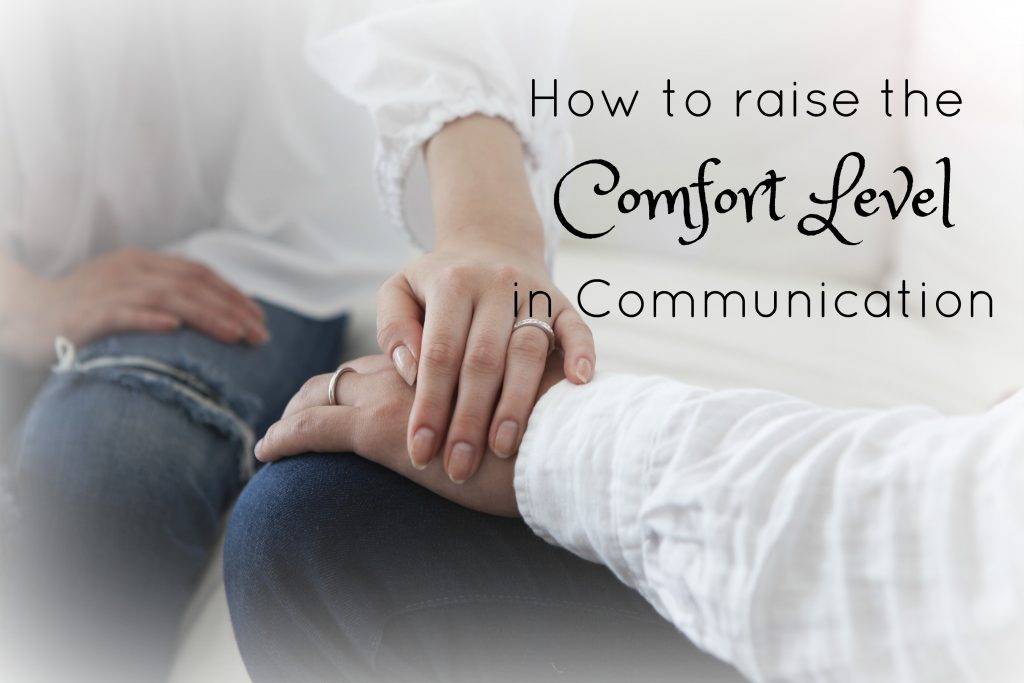Podcast: Play in new window | Download
Subscribe: RSS
Most couples come to see me for help in communication. When asked to describe the problem, I often hear… “When we fell in love opening up was effortless. We could talk for hours! Now when I want to have an important conversation I feel a lump in my throat. My words are jumbled. I start doubting myself, worried about my spouse’s reaction. If I say how I really feel will I be taken seriously? Suddenly, I avoid topics. We speak on the surface. Why am I afraid to talk to my spouse?”So what happened?
I think we get careless as we get comfortable in relationships. Negative patterns form like criticism, defensiveness, or judgment. This dynamic disrupts communication, lowering the comfort level. [Tweet “I think we get careless as we get comfortable in relationships.”] When we expect a negative reaction, we are less likely to open up to a spouse. So, how do we raise the comfort level in communication? Here are 5 steps that help.Label the “lump in the throat” that blocks communication
Do you fear your spouse’s reaction–criticism, dismissiveness, blame, rejection? Some feel like they are not taken seriously, that what they say “goes in one ear and out the other”. Is the “lump” an insecurity based on low self-esteem? “I’m not smart. I don’t know what I’m talking about. I’m making a big deal out of this.”Determine if it is a “me” problem, “we” problem, or both
If it is fear based on the repeated reactions of your spouse then it is a “we” problem. Something is happening in the pattern of interaction that lowers the comfort level. On the other hand, if you struggle with self-confidence or low self-esteem then you primarily have a “me” problem to address. If this is you, don’t fret! There are ways to increase self-confidence.Raise the concern with your spouse without blame
To raise the comfort level you cannot conceal the lump in your throat anymore. You will have to talk about this with your spouse. I know, I’m prescribing the problem. Sounds like you need a safe place to start, right? Sometimes the best way to start the conversation is in written form. Crafting a letter to your mate gives you a format to organize your thoughts and communicate your concerns in a respectful manner. You can send it by email with a request to talk about the contents later in the day. This gives your spouse opportunity to read and listen with an open heart. Be sure to write it as a “we” problem. For example you may start by writing, “I am concerned lately about a problem we have communicating. Maybe you are frustrated too.”Explore together how to raise the comfort level
After your expose your “lump in the throat” your spouse may also want to talk about what lowers the comfort level for him/her too. Show respect by being open to listen to your partner. If it’s a “we” problem, discuss ways you can make it easier when you talk. Marian and I have certain cues we use to alert each other when we want to raise the comfort level. Notice the picture above? This is one of the ways we choose to talk when we want to increase safety. Trust me, it works. Here are a few tips I suggest:- Take turns speaking and listening.
- Summarize what you hear your spouse saying before you speak
- Use “I” and “we” statements. Avoid “you” statements. They can be inflammatory.
- Give your spouse the benefit of the doubt that they genuinely care about your needs
[mk_message_box]Check out my interview on this blog on the All About We Podcast by clicking the the play button above![/mk_message_box]

